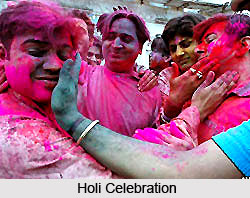
In spite of being an essentially developed district, majority of population concentrate in the towns and the rural division. The exceptional cultural identity for which Angul is famous for is found in the habits and the practices of the inhabitants of Angul.
The culture represented by rural Angul is the replica of the ancient feudatory Angul. The village administration in Angul is headed by the village pradhan who acted as the village chief. People worked as the washer men, smith, and watchmen who are from the village community. The pradhan allotted land for cultivation and accepted only a part of the cultivated products. The rural administrative set up characterizes the feudal culture of Angul. Village institutions like Bhagabat ghar and Kothaghar is meant for the community gathering and in some villages there are extraordinary arrangements to accommodate the outsiders.
Since a majority of population are Hindus, the cultural trend of Angul follows the essential trait of Hinduism. The inhabitants here worship a shapeless village God smear with vermillion. The method of worship has the flavor of the worship of the adivasis of West Bengal. The curious feature of the religious tradition of the inhabitants in Angul is the worship of small tanks during the occasion, locally known as "Dwiti Baman Puja". The married women for the longevity of their husband and children perform it.
The religious practices though radiate the fundamental feature of the Hindu Culture, the diversification of the religious practices is noticed in the different sections of Angul, which also influences the cultural life to a large extent. Mahima Dharma is practiced in the wide regions of Dhenkanal. Apart from these the important rituals are the worship of Devi Durga or Durga Puja, Diwali, Shiva Ratri and Holi.
Some of the traditions are exclusively performed by the tribals- Amb Nua (fresh mango eating), Raja, Gammha Purnima, and Push Punei.
Apart from the religious practices, fairs and festivals, which held during these festivals, reflect the cultural identity of Angul.
The food habits and the dress of the people follow the cultural tradition of Angul. Rice is the staple diet of the people of Angul. The everyday diet includes the rice, dal and vegetables. Chida, Mudhi and pakkhal etc are also the popularized food here. The tribals being a bit different consume millets, beans, pulses and sweet potatoes. In the recent times the mode of dresses has underwent a wide change. The European culture has influenced the culture of Angul largely and the representation of the European culture is found in the dresses of the natives of Angul. The tradition of wearing sari is still been there but the way of wearing sari varies from class to class. The dressing style of the tribals is little different.






